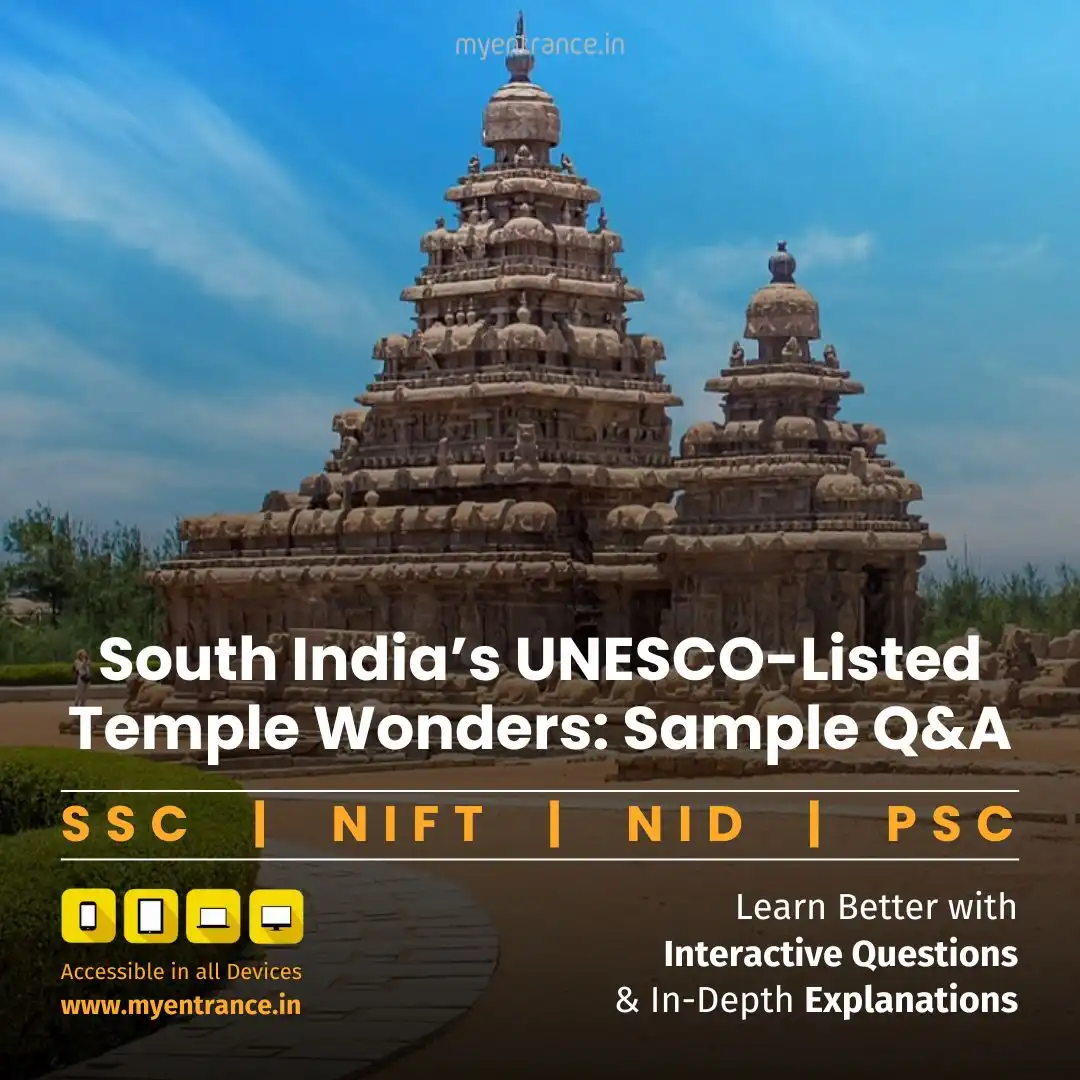Select Language
South India’s UNESCO-Listed Temple Wonders: From Cholas to Kakatiyas
South India is a treasure trove of ancient temples where mythology, history, and architectural brilliance converge. These UNESCO-listed wonders are not just places of worship but living testaments to India’s glorious past.
6 UNESCO Heritage Temples in South India
1. Brihadeeswarar Temple – Thanjavur’s Architectural Marvel
Built over 1,000 years ago by Chola king Raja Raja I, the Brihadeeswarar Temple is a masterpiece of Dravidian architecture. Dedicated to Lord Shiva, this temple features:
A 216-foot towering vimana (temple spire), one of the tallest in India.
A massive monolithic Nandi statue carved from a single rock.
Intricate frescoes and carvings depicting mythological tales.
Pro Tip: Visit at sunrise or sunset to see the temple glow in golden hues.
2. Shore Temple – Mahabalipuram’s Coastal Wonder
Overlooking the Bay of Bengal, the Shore Temple is an 8th-century Pallava marvel. This granite structure is part of a larger complex that includes:
Pancha Rathas – Five monolithic chariot-shaped temples.
Arjuna’s Penance – A giant rock relief showcasing Hindu legends.
A stunning seaside setting, making it perfect for history and beach lovers.
Why Visit? The temple’s fusion of art, mythology, and ocean views creates a surreal experience.
3. Virupaksha Temple – Hampi’s Timeless Wonder
Nestled among Hampi’s boulder-strewn landscape, the Virupaksha Temple is a relic of the Vijayanagara Empire. Highlights include:
A grand gopuram (gateway tower) adorned with intricate carvings.
Musical pillars at the nearby Vittala Temple that produce melodic sounds when tapped.
A sacred elephant that blesses devotees.
Travel Tip: Explore Hampi by bicycle for an immersive historical journey.
4. Pattadakal – Karnataka’s Temple Fusion
A UNESCO site since 1987, Pattadakal blends North and South Indian architectural styles. Key attractions:
Virupaksha Temple – Known for its exquisite carvings of gods and dancers.
Sangameshwara Temple – A fine example of early Chalukyan design.
A peaceful, crowd-free atmosphere, ideal for meditation and photography.
Best Time to Visit: Early morning for soft lighting and fewer tourists.
5. Airavatesvara Temple – Darasuram’s Hidden Gem
Often overshadowed by its larger counterparts, the Airavatesvara Temple is a 12th-century Chola gem. Unique features include:
Musical steps that produce rhythmic sounds when walked upon.
Delicate stone carvings of dancers, deities, and epic scenes.
A serene ambiance, perfect for quiet contemplation.
Did You Know? The temple is named after Airavata, Lord Indra’s white elephant.
6. Ramappa Temple – Telangana’s Floating Brick Wonder
Telangana’s first UNESCO site, the Ramappa Temple, is an engineering marvel from the Kakatiya dynasty. Standout elements:
Lightweight floating bricks that reduce the temple’s weight.
Exquisite carvings of dancers, musicians, and celestial beings.
A picturesque lake and lush greenery surrounding the temple.
Visitor Tip: The temple glows beautifully in the early morning light.
Sample Questions & Answers (FAQs)
Q1. Which is the tallest temple tower in South India?
A1. The Brihadeeswarar Temple in Thanjavur has a 216-foot vimana, making it one of the tallest temple towers in India.
Q2. What makes Ramappa Temple unique?
A2. Ramappa Temple is famous for its floating bricks, intricate carvings, and star-shaped platform.
Q3. Which temple in Hampi has musical pillars?
A3. The Vittala Temple in Hampi features musical pillars that produce notes when tapped.
Q4. Why is Pattadakal significant?
A4. Pattadakal is a UNESCO site showcasing a fusion of North and South Indian temple architecture.
Q5. What is special about the Shore Temple’s location?
A5. The Shore Temple is uniquely positioned by the Bay of Bengal, offering a stunning blend of history and coastal beauty.
Most Predicted Questions
Comprehensive study materials, Expert-guided tips & tricks, Mock tests and instant results.
Start your SSC, NIFT, NID, FDDI, PSC journey today with MyEntrance, your ultimate online coaching platform.








